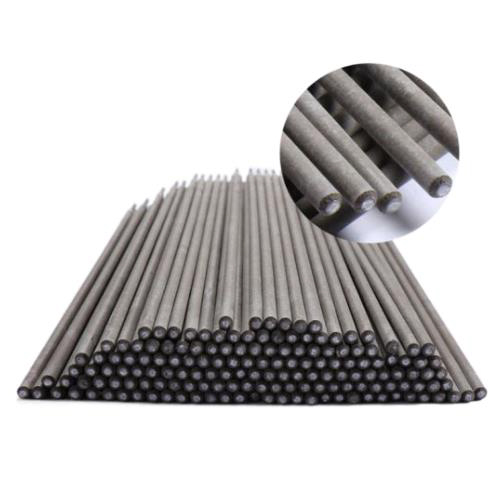

ímet-748 is low-hydrogen potassium, iron powder type moisture retardant electrode designed for use on carbon steel, however in addition to its use on carbon steel, it is also used for joints involving high-strength, high-carbon, or low-alloy steels. The fillet welds made in horizontal and flat welding positions have a slightly convex weld face, with a smooth and finely rippled surface. The electrodes are characterized by a smooth, quiet arc, exceptionally low spatter, and medium arc penetration. These electrodes can be used at high travel speeds. ímet-748 can be used with either ac or dcep. As is common with all low-hydrogen electrodes, a short arc length should always be maintained. This reduces the risk of porosity. The necessity for preheating is reduced; therefore, better welding conditions are provided.
ímet-748 electrodes are very much like the ímet-78 electrodes except that these electrodes are specifically designed for exceptionally good vertical welding with downward progression whereas ímet-78 electrodes are suitable for all positions.
ímet-748 was developed for welding low-alloy high-strength steels, some of which were high in carbon content. Electrodes with other than low-hydrogen coverings may produce “hydrogen-induced cracking” in those steels. These under-bead cracks occur in the base metal, usually just below the weld bead. Weld metal cracks may also occur. ímet-748 should be used when welding high- sulfur or enameling steels. Other electrodes are likely to cause porosity and/or cracks in high-sulfur steels.
Storage and Drying Conditions: To maintain low-hydrogen electrodes with minimal moisture in their coverings, these electrodes should be stored and handled with considerable care. Electrodes which have been exposed to humidity may absorb considerable moisture and their low-hydrogen character may be lost. Then conditioning can restore their low-hydrogen character.
Hydrogen can have adverse effects on welds in some steels under certain conditions. One source of this hydrogen is moisture in the electrode coverings. For this reason, the proper storage, treatment, and handling of electrodes are necessary.
Holding Ovens: 30°C-140°C above ambient temperature. Drying Conditions: 260°C-425°C for 1-2 hours prior to use.
CHEMICAL COMPOSITION OF WELD METAL
|
C |
Mn |
Si |
P |
S |
Ni |
Cr |
Mo |
V |
Mn+Ni+Cr+Ni+V |
|
0.15 |
1.60 |
0.90 |
0.035 |
0.035 |
0.30 |
0.20 |
0.30 |
0.08 |
1.75 |
Single values are maxima, except where specified otherwise.
ALL-WELD-METAL MECHANICAL PROPERTIES
|
Tensile Strength, MPa |
Yield Strength, At 0.2% Offset, MPa |
Elongation, % |
Charpy V-Notch Impact at - 30°C | -35°C, Joules |
|
490 |
400 |
22 |
27 | 27 |
Single values are minimal.
Limit of Moisture Content, % by weight max: 0.60 (As Received or Reconditioned) Diffusible Hydrogen Content Average, Maximum, mL (H2)/100 g Deposited Metal: 4.00
ELECTRODE SIZE & WELDING CURRENT
|
Diameter, mm |
Length, mm |
AC or DCEP, Amperes |
|
3.15, 3.20 |
450 |
80-140 |
|
4.00 |
450 |
150-220 |
|
5.00 |
450 |
210-270 |
WARNING: Safety and health information is available from many sources, including, but not limited to Safety and Health Fact Sheets listed in A11.3, ANSI Z49.1 Safety in Welding, Cutting, and Allied Processes published by the American Welding Society, 8669 Doral Blvd., Suite 130, Doral, FL 33166., and applicable federal and state regulations. The Safety and Health Fact Sheets are revised, and additional sheets added periodically.
